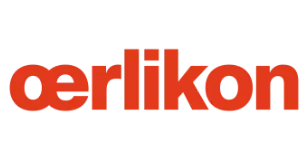
U.S. Renewable Diesel Market Research Report: Forecast (2025-2030)
U.S. Renewable Diesel Market - By Application (Passenger Vehicle, Commercial Vehicle, Aviation, Marine, Power Generation, Others), By Feed Stock (Soybean Oil, Palm Oil, Animal Fats..., Vegetable Oils, Used Cooking Oil), By Production Process (Hydrotreated Vegetable Oil [HVO], Ethanol-to-Diesel [ETD], Gasification-to-Liquids [GTL], Microwave-assisted Processing), By End User (Transportation, Industrial) and others Read more
- Energy
- Jan 2025
- Pages 133
- Report Format: PDF, Excel, PPT
Market Definition
Renewable diesel is biofuel produced from oils and fats, including canola and soybean oil. It is processed to be chemically the same as petroleum diesel.
Market Insights & Analysis: U.S. Renewable Diesel Market (2025-30):
The US Renewable Diesel Market size was valued at around 99.42 MB (million barrels) in 2024 and is projected to reach 922.39 MB by 2030. Along with this, the market is estimated to grow at a CAGR of around 45% during the forecast period, i.e., 2025-30. The country's Environmental Protection Agency has established a specific standard named Renewable Fuel Standard to meet a particular amount of the country's fuel requirement from renewable sources.
| Report Coverage | Details |
|---|---|
| Historical Years | 2020-23 |
|
Base Years
|
2024
|
|
Forecast Years
|
2025-30
|
| Market Size in 2024 | 99.42 Million Barrels |
| Market Size by 2030 | 922.39 Million Barrels |
| CAGR (2025-30) | 45% |
| Top Key Players | Shell Plc, Chevron Corporation, TotalEnergies, BP, Exxon Mobil Corporation, Honeywell International Inc., Cargill, Incorporated, Eni S.p.A neste, Equinor, Repsol S.A., Marathon Petroleum Corporation, Phillips 66, Valero Energy Corporation, Neste Corporation, and others |
| Key Report Highlights |
|
*Boost strategic growth with in-depth market analysis - Get a free sample preview today!
As renewable diesel is a type of improved biofuel, for the production of each gallon, the producers can get Renewable Identification Numbers, as per this standard. As of January 1, 2023, there were 17 operational renewable diesel production plants in 12 states across the United States, together capable of generating around 3 billion gallons yearly. In other regions such as California, the Low Carbon Fuel Standard has encouraged renewable fuels through carbon credits awarded to the fuel based on its carbon intensity. These efforts make renewable diesel an attractive and economical substitute for diesel from petroleum.
Moreover, the issues about the environment and the push for cleaner energy resources are key factors in the expansion of the renewable diesel market. Renewable diesel drastically cuts the carbon emissions than that in traditional diesel. Studies reveal that renewable diesel can reduce carbon dioxide emissions by about 4% in contrast to petroleum diesel. These features make renewable diesel interesting to governments and businesses trying to meet sustainability targets. For Instance: California is known for being among the strictest regarding its environment. It has established stern objectives to reduce emission levels. Some of the most common targets among them include a plan to achieve carbon neutrality by 2045. Therefore, companies and organizations are looking for solutions to reduce carbon emissions. In this condition, renewable diesel is emerging as an important alternative.
![U.S. Renewable Diesel Market Size, Growth & Production [2030]](https://www.marknteladvisors.com/public/uploads/infographic/1735897337r.webp)
The improvement in progress in renewable diesel production technology is the other pushing factor. The emergence of the latest feedstock, such as waste oils, animal fat, and algae, has increased options for renewable diesel production, which is now convenient and relatively inexpensive. Advances in refining processes have increased efficiency so that producers can easily respond to increasing demand and obtain greater yields. This growth is projected to persist, with the opportunity for further increase as new technologies are applied. The increasing need for cleaner fuels in transportation and heavy industries is ultimately leading to the growth of renewable diesel. Trucks, buses, and business equipment usually use diesel engines that can run on renewable diesel without any modifications to the engine. This makes renewable diesel an appropriate choice for fleet operators and industries aiming to fulfill stricter emissions policies. With more states enforcing stricter gas emission regulations, the need for renewable diesel is predicted to rise, becoming a key factor in the nation's shift towards cleaner energy.
U.S. Renewable Diesel Market Driver:
Enhancement in Government Tax Breaks & Renewable Energy Investments – Government tax breaks and investments in renewable energy play a major role in driving the US Renewable Diesel Market. The Inflation Reduction Act of 2022 has greatly impacted the extension of the USD1 per gallon blending tax credit for biodiesel and renewable diesel until the end of 2024. This policy encourages the production and mixing of renewable diesel to boost its competitiveness in comparison to traditional fossil fuels. Moreover, states such as California offer extra financial rewards for producers of low-carbon fuel through initiatives like the Low Carbon Fuel Standard, which boosts the acceptance of these fuels in the market. Federal aid goes beyond tax incentives by also including strategic investments in renewable infrastructure. For instance, the Department of Energy has dedicated substantial funds to enhance biofuel research and enhance production technologies. These efforts are crucial for decreasing reliance on foreign oil, meeting environmental targets, and improving energy stability. These policies have facilitated collaborations between manufacturers and fuel suppliers, promoting expansion and market reach while also supporting sustained development.
U.S. Renewable Diesel Market Opportunity:
Carbon Reduction Goals in the Transportation Industry – The growing demand for lowering carbon emissions in the transportation sector is generating a significant opportunity in the US Renewable Diesel Market. The federal and state governments are currently concentrating on low-carbon alternatives to achieve the important significant cuts in emissions. For example, California's Low Carbon Fuel Standard mandates a decrease in the carbon intensity of fuels, making renewable diesel the top choice for meeting this requirement. Renewable diesel serves as a direct substitute for fossil diesel, requiring no changes to infrastructure or engines, and presents chances to lower greenhouse gas emissions from the traditionally challenging-to-decarbonize transportation and aviation industries. This action is reinforced by the Federal Renewable Fuel Standard, which sets mandates for raising blending levels to 36 billion gallons by 2022. Further, with private sector pressures, even companies like UPS and Amazon are now adopting renewable diesel so that they can meet sustainability goals. The use of renewable diesel-based Sustainable Aviation Fuel itself raises the prospects of the market and also highlights the intention of the aviation sector to achieve net-zero goals.
U.S. Renewable Diesel Market Challenge:
Availability of Affordable Substitutes – The US Renewable Diesel Market is encountering a major obstacle because of the presence of cheaper alternatives such as conventional biodiesel and advanced ethanol blends. Biodiesel, produced from similar sources as soybean oil and animal fats, is often less expensive due to lower production costs and simpler processing techniques. In addition, biodiesel benefits from utilizing current distribution systems and infrastructure, making it a practical choice for consumers who prioritize cost-effectiveness over performance benefits. Enhanced ethanol mixtures, supported by programs like the Renewable Fuel Standard, offer an extra option. Due to the increased investment in cellulosic ethanol derived from non-food materials, ethanol blends have become more accessible and less expensive. Additionally, fossil diesel persists in competing in markets with fluctuating subsidies or blending requirements for renewable fuels, resulting in price inconsistencies that hinder the uptake of renewable diesel.
U.S. Renewable Diesel Market Trend:
Development of Next-Gen Biofuel Technologies – There is a shift in the US Renewable Diesel Market towards the advancement of next-generation biofuel technologies. These developments aim to broaden the variety of raw materials used and improve manufacturing efficiency to lower expenses and minimize environmental consequences. New technologies like; Hydrothermal Liquefaction and Fischer-Tropsch synthesis can transform agricultural leftovers, municipal garbage, and algae into environmentally friendly diesel fuel, offering excellent carbon reduction capabilities. Major companies such as; Neste and Chevron are dedicating significant resources to research the integration of non-food-based feedstocks such as; camelina oil and waste fats, to tackle issues related to feedstock availability and food security. Moreover, more sophisticated catalytic methods are enhancing fuel output and standards while reducing energy consumption. The Inflation Reduction Act 2022 advances by giving low-carbon fuel incentives. This further encourages more R&D in this field.
U.S. Renewable Diesel Market (2025-30): Segmentation Analysis
The US Renewable Diesel Market study of MarkNtel Advisors evaluates & highlights the major trends and influencing factors in each segment. It includes predictions for 2025–2030 at the national level. Based on the analysis, the market has been further classified as:
Based on Application:
- Passenger Vehicle
- Commercial Vehicle
- Aviation
- Marine
- Power Generation
- Others
The commercial vehicle segment dominates the US Renewable Diesel Market by holding more than 30% market share, mainly because of its important function in transportation and logistics. Commercial trucks and buses are the main sources of greenhouse gas emissions, leading to efforts at the federal and state levels to minimize their impact on the environment. Renewable diesel is well suited for this sector, as it easily blends with current diesel engines without any changes, providing an instant way to reduce carbon emissions in heavy-duty transportation. For instance; in California, the Low Carbon Fuel Standard program has stimulated fleet operators to switch to renewable diesel with a resultant reduction in carbon intensity. Major cities such as; Los Angeles and San Francisco are mandating its use in public transportation, thereby inspiring greater use. Additionally, majors in the logistics sector including FedEx and UPS are switching the fleets of their vehicles over to renewable diesel in support of their sustainability goals.
Based on the Production Process:
- Hydrotreated Vegetable Oil
- Ethanol-to-Diesel
- Gasification-to-Liquids
- Microwave-assisted Processing
The top segment in the US Renewable Diesel Market is the hydrotreated vegetable oil production process, known for its efficiency and versatility. It is a thoroughly processed renewable diesel made by hydrogenating vegetable oils or animal fats. Unlike traditional biodiesel, it has nearly identical chemical properties to fossil diesel, allowing it to be used as a direct replacement fuel in current diesel engines and infrastructure. Its dominance is due to its high-quality fuel, including better cold flow properties and greater energy content, making it suitable for various uses like; commercial vehicles, aviation, and marine transport. Key players in the renewable diesel industry, like Neste, Valero, and Marathon Petroleum, have made significant investments in HVO production plants, utilizing advanced hydroprocessing technologies.
U.S. Renewable Diesel Industry Recent Development:
- September 2024: Honeywell partnered with USA BioEnergy to implement its Experion® PKS Distributed Control System at Texas Renewable Fuels' biorefinery. The system will optimize operations at the plant, which converts wood waste into sustainable aviation fuel for Southwest Airlines, supporting energy transition and aviation sustainability goals.
- July 2024: The US Environmental Protection Agency (EPA) gave Renewable Fuel Standard (RFS) pathway approval to BP Products North America to produce renewable diesel from carinata oil and diesel at its Cherry Point refinery in Washington, Biodiesel Magazine reported.
Gain a Competitive Edge with Our U.S. Renewable Diesel Market Report
- The US Renewable Diesel Market by MarkNtel Advisors provides a detailed & thorough analysis of market size & share, growth rate, competitive landscape, and key players. This comprehensive analysis helps businesses gain a holistic understanding of the market dynamics & make informed decisions.
- This report also highlights current market trends & future projections, allowing businesses to identify emerging opportunities & potential challenges. By understanding market forecasts, companies can align their strategies & stay ahead of the competition.
- The US Renewable Diesel Market Report aids in assessing & mitigating risks associated with entering or operating in the market. By understanding market dynamics, regulatory frameworks, and potential challenges, businesses can develop strategies to minimize risks & optimize their operations.
Frequently Asked Questions
- Market Segmentation
- Introduction
- Product Definition
- Research Process
- Assumptions
- Executive Summary
- US Renewable Diesel Market Trends & Development
- US Renewable Diesel Market Dynamics
- Drivers
- Challenges
- US Renewable Diesel Market Hotspot & Opportunities
- US Renewable Diesel Market Policies & Regulations
- US Renewable Diesel Market Pricing Analysis, 2020-2025
- US Renewable Diesel Market Supply Chain Analysis
- US Renewable Diesel Market Analysis, 2020-2030F
- Market Size & Analysis
- By Revenue (USD Million)
- Market Share & Analysis
- By Application
- Passenger Vehicle- Market Size & Forecast 2020-2030, USD Million
- Commercial Vehicle- Market Size & Forecast 2020-2030, USD Million
- Aviation- Market Size & Forecast 2020-2030, USD Million
- Marine- Market Size & Forecast 2020-2030, USD Million
- Power Generation- Market Size & Forecast 2020-2030, USD Million
- Others- Market Size & Forecast 2020-2030, USD Million
- By Feed Stock
- Soybean Oil- Market Size & Forecast 2020-2030, USD Million
- Palm Oil- Market Size & Forecast 2020-2030, USD Million
- Animal Fats - Market Size & Forecast 2020-2030, USD Million
- Vegetable Oils- Market Size & Forecast 2020-2030, USD Million
- Used Cooking Oil- Market Size & Forecast 2020-2030, USD Million
- By Production Process
- Hydrotreated Vegetable Oil (HVO)- Market Size & Forecast 2020-2030, USD Million
- Ethanol-to-Diesel (ETD)- Market Size & Forecast 2020-2030, USD Million
- Gasification-to-Liquids (GTL)- Market Size & Forecast 2020-2030, USD Million
- Microwave-assisted Processing - Market Size & Forecast 2020-2030, USD Million
- By End User
- Transportation- Market Size & Forecast 2020-2030, USD Million
- Industrial- Market Size & Forecast 2020-2030, USD Million
- By Region
- North-East - Market Size & Forecast 2020-2030F, USD Million
- Mid-West - Market Size & Forecast 2020-2030F, USD Million
- West - Market Size & Forecast 2020-2030F, USD Million
- South - Market Size & Forecast 2020-2030F, USD Million
- By Company
- Competition Characteristics
- Company Share & Analysis
- By Application
- Market Size & Analysis
- US Passenger Vehicle Renewable Diesel Market Analysis, 2020-2030F
- Market Size & Analysis
- By Revenue (USD Million)
- Market Share & Analysis
- By Feed Stock- Market Size & Forecast, 2020-2030 USD Million
- By Production Process- Market Size & Forecast, 2020-2030 USD Million
- By End User- Market Size & Forecast, 2020-2030 USD Million
- By Region- Market Size & Forecast, 2020-2030 USD Million
- Market Size & Analysis
- US Commercial Vehicle Renewable Diesel Market Analysis, 2020-2030F
- Market Size & Analysis
- By Revenue (USD Million)
- Market Share & Analysis
- By Feed Stock- Market Size & Forecast, 2020-2030 USD Million
- By Production Process- Market Size & Forecast, 2020-2030 USD Million
- By End User- Market Size & Forecast, 2020-2030 USD Million
- By Region- Market Size & Forecast, 2020-2030 USD Million
- Market Size & Analysis
- US Aviation Renewable Diesel Market Analysis, 2020-2030F
- Market Size & Analysis
- By Revenue (USD Million)
- Market Share & Analysis
- By Feed Stock- Market Size & Forecast, 2020-2030 USD Million
- By Production Process- Market Size & Forecast, 2020-2030 USD Million
- By End User- Market Size & Forecast, 2020-2030 USD Million
- By Region- Market Size & Forecast, 2020-2030 USD Million
- Market Size & Analysis
- US Marine Renewable Diesel Market Analysis, 2020-2030F
- Market Size & Analysis
- By Revenue (USD Million)
- Market Share & Analysis
- By Feed Stock- Market Size & Forecast, 2020-2030 USD Million
- By Production Process- Market Size & Forecast, 2020-2030 USD Million
- By End User- Market Size & Forecast, 2020-2030 USD Million
- By Region- Market Size & Forecast, 2020-2030 USD Million
- Market Size & Analysis
- US Power Generation Renewable Diesel Market Analysis, 2020-2030F
- Market Size & Analysis
- By Revenue (USD Million)
- Market Share & Analysis
- By Feed Stock- Market Size & Forecast, 2020-2030 USD Million
- By Production Process- Market Size & Forecast, 2020-2030 USD Million
- By End User- Market Size & Forecast, 2020-2030 USD Million
- By Region- Market Size & Forecast, 2020-2030 USD Million
- Market Size & Analysis
- US Renewable Diesel Market Key Strategic Imperatives for Growth & Success
- Competition Outlook
- Company Profiles
- Shell Plc
- Business Description
- Product Portfolio
- Strategic Alliances or Partnerships
- Recent Developments
- Financial Details
- Others
- Chevron Corporation
- Business Description
- Product Portfolio
- Strategic Alliances or Partnerships
- Recent Developments
- Financial Details
- Others
- TotalEnergies
- Business Description
- Product Portfolio
- Strategic Alliances or Partnerships
- Recent Developments
- Financial Details
- Others
- BP
- Business Description
- Product Portfolio
- Strategic Alliances or Partnerships
- Recent Developments
- Financial Details
- Others
- Exxon Mobil Corporation
- Business Description
- Product Portfolio
- Strategic Alliances or Partnerships
- Recent Developments
- Financial Details
- Others
- Honeywell International Inc.
- Business Description
- Product Portfolio
- Strategic Alliances or Partnerships
- Recent Developments
- Financial Details
- Others
- Cargill, Incorporated
- Business Description
- Product Portfolio
- Strategic Alliances or Partnerships
- Recent Developments
- Financial Details
- Others
- Eni S.p.A neste
- Business Description
- Product Portfolio
- Strategic Alliances or Partnerships
- Recent Developments
- Financial Details
- Others
- Equinor
- Business Description
- Product Portfolio
- Strategic Alliances or Partnerships
- Recent Developments
- Financial Details
- Others
- Repsol S.A.
- Business Description
- Product Portfolio
- Strategic Alliances or Partnerships
- Recent Developments
- Financial Details
- Others
- Marathon Petroleum Corporation
- Business Description
- Product Portfolio
- Strategic Alliances or Partnerships
- Recent Developments
- Financial Details
- Others
- Phillips 66
- Business Description
- Product Portfolio
- Strategic Alliances or Partnerships
- Recent Developments
- Financial Details
- Others
- Valero Energy Corporation
- Business Description
- Product Portfolio
- Strategic Alliances or Partnerships
- Recent Developments
- Financial Details
- Others
- Neste Corporation
- Business Description
- Product Portfolio
- Strategic Alliances or Partnerships
- Recent Developments
- Financial Details
- Others
- Others
- Shell Plc
- Company Profiles
- Disclaimer
MarkNtel Advisors follows a robust and iterative research methodology designed to ensure maximum accuracy and minimize deviation in market estimates and forecasts. Our approach combines both bottom-up and top-down techniques to effectively segment and quantify various aspects of the market. A consistent feature across all our research reports is data triangulation, which examines the market from three distinct perspectives to validate findings. Key components of our research process include:
1. Scope & Research Design At the outset, MarkNtel Advisors define the research objectives and formulate pertinent questions. This phase involves determining the type of research—qualitative or quantitative—and designing a methodology that outlines data collection methods, target demographics, and analytical tools. They also establish timelines and budgets to ensure the research aligns with client goals.
2. Sample Selection and Data Collection In this stage, the firm identifies the target audience and determines the appropriate sample size to ensure representativeness. They employ various sampling methods, such as random or stratified sampling, based on the research objectives. Data collection is carried out using tools like surveys, interviews, and observations, ensuring the gathered data is reliable and relevant.
3. Data Analysis and Validation Once data is collected, MarkNtel Advisors undertake a rigorous analysis process. This includes cleaning the data to remove inconsistencies, employing statistical software for quantitative analysis, and thematic analysis for qualitative data. Validation steps are taken to ensure the accuracy and reliability of the findings, minimizing biases and errors.

4. Data Forecast and FinalizationThe final phase involves forecasting future market trends based on the analyzed data. MarkNtel Advisors utilize predictive modeling and time series analysis to anticipate market behaviors. The insights are then compiled into comprehensive reports, featuring visual aids like charts and graphs, and include strategic recommendations to inform client decision-making









